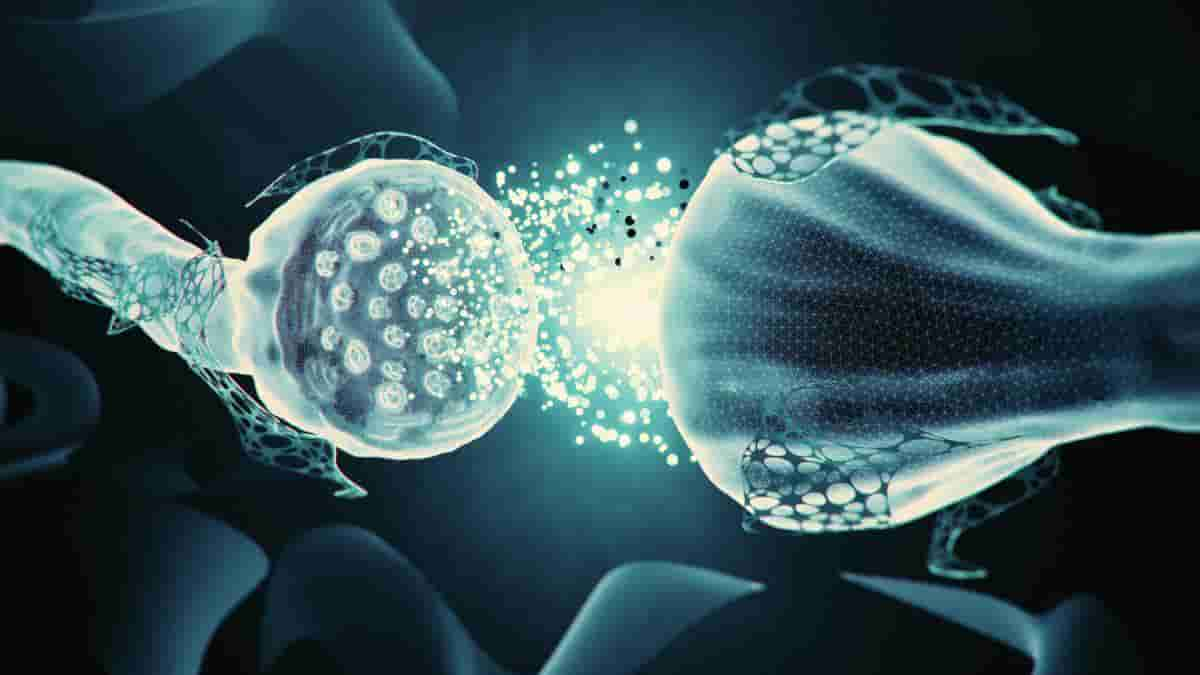Degeneration of dopamine-producing neurons is widely regarded as the initial cause of Parkinson’s disease. But a new study from Northwestern Medicine researchers challenges the belief.
The new research suggests that synaptic dysfunction in neurons precedes neurodegeneration by causing dopamine deficits.
“Based on these findings, we hypothesize that targeting dysfunctional synapses before the neurons are degenerated may represent a better therapeutic strategy,”
said lead author Dr. Dimitri Krainc, chair of neurology at Northwestern University Feinberg School of Medicine.
Human Dopamine Neurons
Parkinson’s disease, which affects between 1% and 2% of the population, is characterized by stationary tremors, rigidity, and bradykinesia (slow movement). The progressive loss of midbrain dopaminergic neurons causes these motor symptoms.
The study focused on patient-derived midbrain neurons, which is important because mouse and human dopamine neurons have different physiologies, and findings in mouse neurons are not applicable to humans.
Northwestern scientists found that dopaminergic synapses are not functioning correctly in various genetic forms of Parkinson’s disease. This work, together with other recent studies by Krainc’s lab, addresses one of the major gaps in the field: how different genes linked to Parkinson’s lead to the degeneration of human dopaminergic neurons.
Parkin and PINK1
Consider two employees at a neuronal recycling facility. It is their duty to recycle old or overworked mitochondria, the energy producers of the cell. If dysfunctional mitochondria persist within the cell, they can contribute to cellular dysfunction.
The process of recycling or removing these old mitochondria is termed mitophagy. The Parkin and PINK1 (PTEN-induced kinase 1) genes are the two employees in this recycling process.
Normally, PINK1 activates Parkin, which moves the old mitochondria into the path to be recycled or disposed of. People who have mutations in both copies of PINK1 or Parkin develop Parkinson’s disease due to ineffective mitophagy.
Two Sisters, One Discovery
Two sisters were born without the PINK1 gene because both parents lacked a copy of the crucial gene. This put the sisters at high risk for Parkinson’s disease. However, one sister was diagnosed at the age of 16, while the other was not diagnosed until she was 48.
Krainc and his colleagues made a significant new discovery as a result of their investigation into the cause of the difference. The sibling who was diagnosed at the age of 16 also had a partial loss of Parkin, which should not be enough to develop Parkinson’s.
“There must be a complete loss of Parkin to cause Parkinson’s disease. So, why did the sister with only a partial loss of Parkin get the disease more than 30 years earlier?”
Krainc wondered.
Unknown Parkin Function
As a result, the scientists discovered that Parkin performs a hitherto unknown function. The gene also functions in a different pathway in the synaptic terminal — unrelated to its mitochondria recycling work — where it controls dopamine release.
Neurons from Parkinson’s disease patients with mutant parkin showed defective recycling of synaptic vesicles. This caused an accumulation of toxic oxidized dopamine. Having both the Parkin and (PINK1) mutations leads to an earlier disease onset compared with mutant PINK1 by itself.
Northwestern scientists saw a new opportunity to boost Parkin and potentially prevent dopamine neurodegeneration with this new understanding of what went wrong for the sister.
“Now, we need to develop drugs that stimulate this pathway, correct synaptic dysfunction and hopefully prevent neuronal degeneration in Parkinson’s,”
Krainc said. The work was supported by National Institutes of Health grants from the National Institute of Neurological Disorders and Stroke.
References:
- Pingping Song, Wesley Peng, Veronique Sauve, Rayan Fakih, Zhong Xie, Daniel Ysselstein, Talia Krainc, Yvette C. Wong, Niccolò E. Mencacci, Jeffrey N. Savas, D. James Surmeier, Kalle Gehring, Dimitri Krainc. Parkinson’s disease-linked parkin mutation disrupts recycling of synaptic vesicles in human dopaminergic neurons. Neuron, 2023; DOI: 10.1016/j.neuron.2023.08.018
- Lena F. Burbulla et al. Dopamine oxidation mediates mitochondrial and lysosomal dysfunction in Parkinson’s disease. Science 357, 1255 1261 (2017). DOI:10.1126/science.aam908
Last Updated on November 11, 2023
